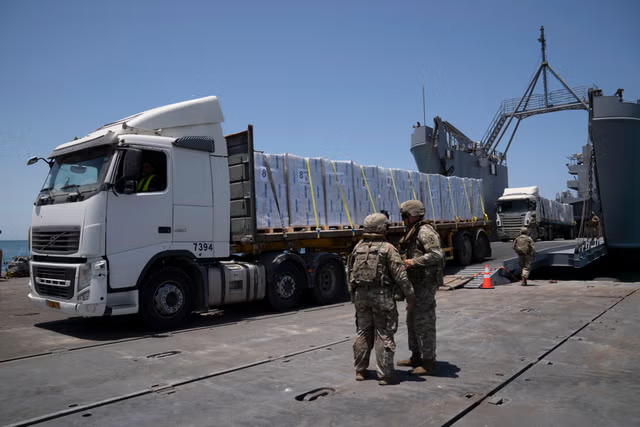The United States Marine Corps has deployed an unknown number of spying drones to a strategic Japanese island close to China and contested airspace, according to a report on Monday.
The Marine Corps has sent MQ-9A "Reaper" drones to Kadena Air Base on the Japanese island of Okinawa to support training. This will increase proficiency in support of the defense of Japan, the 1st Marine Aircraft Wing's spokesperson told U.S. military newspaper Stars and Stripes.
The "Reaper" is an unmanned expeditionary medium-altitude, high-endurance aircraft that is assigned to the Extended Range Marine Air-Ground Task Force. It has a wingspan of 66 feet and a length of 36 feet with an endurance of 27 hours in flight, operating either remotely or fully autonomously.
The drone supports the Marines' littoral operations in contested environments with a long-range intelligence, surveillance, and reconnaissance capability. The service has concluded that it must expand and increase unmanned aviation capabilities to survive and thrive inside contested spaces.
Okinawa lies between the East China Sea and the Philippine Sea. It is part of the so-called first island chain, which starts from Japan in the north and extends southward to Taiwan and the Philippines. This containment strategy aims at limiting China's military activities within the chain.
The MQ-9A deployment comes after multiple Chinese military flight operations around the first island chain. Beijing sent two drones to the "Yonaguni Gap" on August 23, a less than 70-mile-wide waterway that separates Taiwan and Japan's westernmost island of Yonaguni.
The American unmanned aircraft have been deployed with Marine Unmanned Aerial Vehicle Squadron 3, according to the report. The Hawaii-based squadron, which has operated a variety of drones since its activation in 2008, reached initial operational capability with the "Reaper" in August 2023.
The Okinawa Defense Bureau under Japan's Defense Ministry told the local authority in Okinawa that fewer than six U.S. Marine Corps drones were to be based at Kadena to conduct intelligence, surveillance and reconnaissance activities. They will deploy temporarily for a year, the Stars and Stripes report added.
Photos published by the U.S. Marine Corps on Monday showed the "Reaper" drone systems being unloaded from a U.S. Air Force transport aircraft at Kadena on August 13. The 1st Marine Aircraft Wing's spokesperson did not disclose the number of drones deployed because of operational security considerations.
Ten other American drones have been stationed at Kadena since October last year. Eight are Air Force "Reaper" drones, while the other two are Navy MQ-4C "Triton" drones. The latter will be withdrawn in October.
Unlike the variant for the Marines, the Air Force "Reaper" can carry missiles and bombs. The "Triton" has a maritime intelligence, surveillance and reconnaissance capability and is part of the Navy's Maritime Patrol and Reconnaissance Force.
Kadena is referred to as the "Keystone of the Pacific," an important stronghold for U.S. air power projection in the region. The Pentagon announced in July that the Air Force will deploy 36 F-15EX "Eagle II" fighter jets there to replace 48 older F-15C/D "Eagle" aircraft.
Disclaimer: The copyright of this article belongs to the original author. Reposting this article is solely for the purpose of information dissemination and does not constitute any investment advice. If there is any infringement, please contact us immediately. We will make corrections or deletions as necessary. Thank you.



